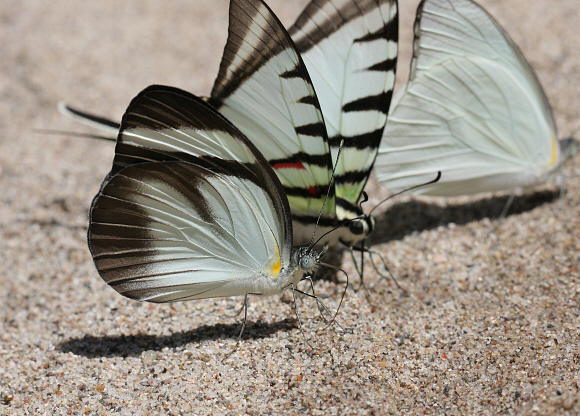 Itaballia demophile, Rio Pindayo, Peru – Adrian Hoskins
Itaballia demophile, Rio Pindayo, Peru – Adrian Hoskins
Introduction
The genus Itaballia contains only 3 species – pandosia, marana and demophile, all confined to the neotropical region.Itaballia demophile is the commonest and most widespread member of the genus, being found from Mexico to Paraguay. Both sexes are similar in appearance, but the markings of the female are heavier and browner.
Habitats
The butterfly is found in disturbed habitats including forest clearings, riverbanks, roadsides, fields, cattle pastures and wasteland, at altitudes between sea level and at least 800m.
Lifecycle
The following applies in general to the genus Itaballia :The eggs are yellow, and laid singly under the leaves of Capparis ( Capparidaceae ). The larvae are typically green with yellow and blue tubercles. The chrysalis is whitish and adorned with black spikes on the back. It is formed on a mat of silk spun on the upper surface of Capparis leaves.
Adult behaviour
Males are usually seen in small numbers, amidst mixed aggregations of Pieridae and Papilionidae mud-puddling on river sandbanks, seepages and other sources of mineralised moisture. Both sexes nectar at Lantana, Psychotria and Hamelia.
